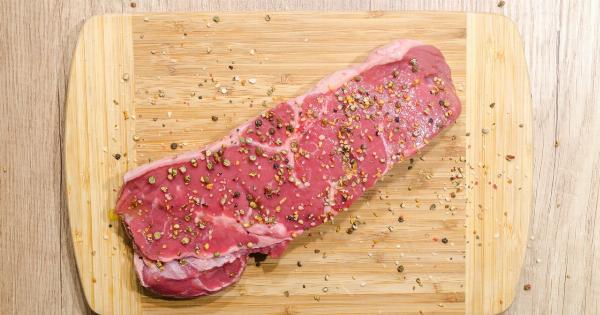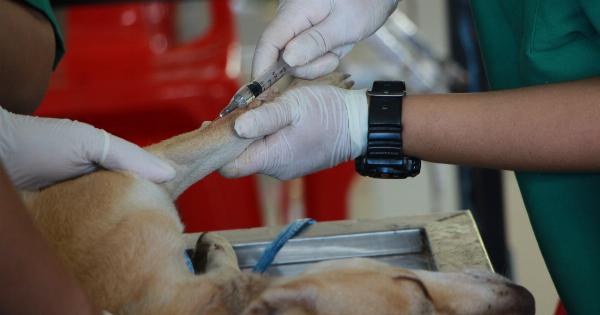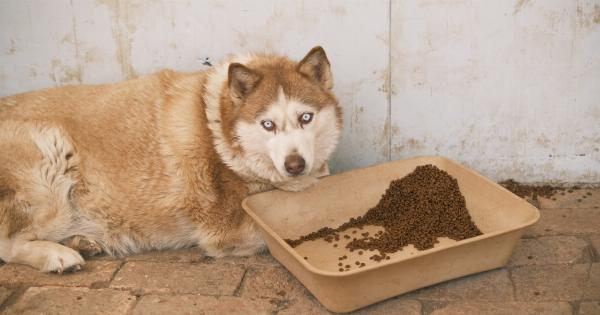As a dog owner, one of the most important decisions you can make for your furry friend is choosing the right dog food. Proper nutrition plays a vital role in your dog’s overall health and well-being.
In this comprehensive guide, we will cover everything you need to know about dog food, including different types of dog food, ingredients to look for, feeding guidelines, and common myths surrounding dog food.
Types of Dog Food
When it comes to dog food, there are several types to choose from:.
1. Dry Dog Food (Kibble)
Dry dog food, also known as kibble, is one of the most commonly available and affordable options. It comes in various shapes, sizes, and flavors. Dry dog food has a long shelf life and can be easily stored.
It also helps in maintaining good dental health and hygiene, as the chewing action helps remove plaque and tartar.
2. Wet Dog Food (Canned)
Wet dog food, as the name suggests, is canned food that contains higher moisture content compared to dry dog food. It usually has a more appetizing aroma and flavor for dogs.
Wet food can be ideal for dogs with dental issues or those who have trouble chewing, as it is softer and easier to consume.
3. Dehydrated or Freeze-Dried Dog Food
Dehydrated or freeze-dried dog food is a popular option among health-conscious dog owners. It undergoes minimal processing and retains more nutrients compared to traditional dog food.
Dehydrated dog food requires rehydration before serving, while freeze-dried food can be fed as is.
4. Raw Dog Food
Raw dog food, also known as a raw or BARF (Biologically Appropriate Raw Food) diet, is gaining popularity among some dog owners. This diet consists of raw meat, bones, fruits, vegetables, and other natural foods.
Proponents of raw diets believe it mimics a dog’s ancestral diet and promotes optimal health. However, it is important to consult with a veterinarian before switching to a raw diet to ensure your dog’s nutritional needs are being met.
Ingredients to Look for in Dog Food
When choosing dog food, it’s essential to read the ingredients list and look for high-quality, nutritious ingredients. Here are some ingredients to prioritize:.
1. Protein Sources
Dogs are primarily carnivorous animals, so it’s important to choose dog food that contains high-quality protein sources. Look for named animal proteins like chicken, beef, fish, or turkey, as the first ingredient on the list.
2. Whole Grains
Contrary to popular belief, whole grains can provide essential nutrients to dogs. Look for dog food that contains whole grains like brown rice, oats, and quinoa.
3. Fruits and Vegetables
Fruits and vegetables are a great source of vitamins, minerals, and antioxidants. Look for dog food that includes fruits and vegetables like sweet potatoes, carrots, blueberries, and spinach.
4. Essential Fatty Acids
Omega-3 and omega-6 fatty acids are crucial for a dog’s skin and coat health. Ingredients like fish oil or flaxseed can provide these essential fatty acids.
Feeding Guidelines for Dogs
Feeding guidelines vary based on factors like your dog’s size, age, activity level, and overall health. Here are some general tips to consider:.
1. Determine the Right Portion Size
Follow the recommended portion sizes mentioned on the dog food packaging, but also consider your dog’s individual needs. If your dog is overweight, you may need to feed them less, while underweight dogs may require larger portions.
2. Establish a Feeding Schedule
Establish a regular feeding schedule and stick to it. Divide your dog’s daily portion into two or more meals to avoid overfeeding or bloating.
3. Monitor Your Dog’s Weight
Regularly monitor your dog’s weight and body condition. Adjust their portion sizes accordingly to maintain a healthy weight.
4. Provide Fresh Water
Always ensure your dog has access to fresh, clean water. Hydration is vital for their overall health.
Common Myths Surrounding Dog Food
There are several myths surrounding dog food that can mislead dog owners. Let’s debunk some common misconceptions:.
1. Grain-Free Diets are Always Better
While grain-free diets can be suitable for certain dogs with grain allergies or sensitivities, they are not inherently superior. Grains like whole wheat, rice, and oats can provide valuable nutrients to dogs.
2. All By-Products are Bad
Not all by-products are bad for dogs. High-quality by-products, such as organs, can provide essential nutrients. However, it’s important to choose reputable brands that use high-quality ingredients.
3. Raw Diets are Always Safer
Raw diets can carry an increased risk of bacterial contamination for both dogs and their owners. It’s crucial to handle raw food properly to minimize the risk of foodborne illnesses.
Conclusion
Choosing the right dog food is crucial for your furry friend’s health and well-being. Consider their dietary needs, preferences, and any specific health conditions when selecting the type of dog food.
Pay attention to high-quality ingredients and consult with a veterinarian for personalized guidance. By providing your dog with proper nutrition, you are giving them the foundation for a long and healthy life.






























